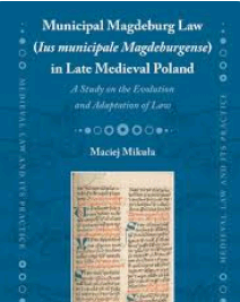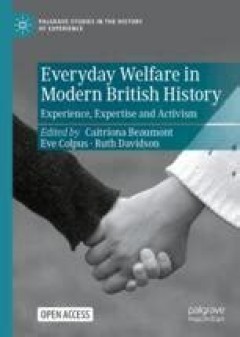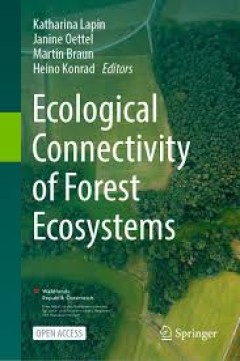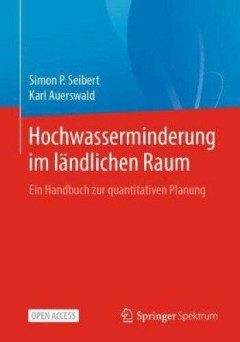Filter by

Napoleonic Divorce Law in Poland (1808-1852)
Pada tahun 1807, Napoleon Bonaparte menciptakan Kadipaten Warsawa dari tanah Polandia yang telah dialihkan ke Prancis oleh Rusia. Kode Sipilnya juga diterapkan di Kadipaten baru itu dan, berbeda dengan Gereja Katolik, ia mengizinkan pembubaran pernikahan melalui perceraian. Buku ini memberikan sudut pandang baru tentang penerapan regulasi perceraian Napoleonik di tanah Polandia antara 1808-1852…
- Edition
- -
- ISBN/ISSN
- 9789004507319
- Collation
- online resource ( XV, 281 Pages)
- Series Title
- Perpustakaan Sejarah Hukum
- Call Number
- 346.01609438 POR n

Municipal Magdeburg Law (Ius municipale Magdeburgense) in Late Medieval Polan…
Dalam volume ini, Maciej Mikuła menganalisis teks-teks yang ada dari Ius municipale Magdeburgense, kumpulan paling penting dari Hukum Magdeburg pada akhir Abad Pertengahan di Polandia. Ia membahas berbagai tradisi terjemahan dari kumpulan tersebut; penerapan Hukum Magdeburg di kota-kota; bagaimana perbedaan antara versi dapat mempengaruhi penerapan hak; dan bagaimana penemuan percetakan memeng…
- Edition
- -
- ISBN/ISSN
- 9789004456198
- Collation
- online resource ( XX, 470 Pages)
- Series Title
- Hukum Abad Pertengahan dan Penerapannya
- Call Number
- 349.43809 MIK m

The Ndebele, Frank Oates, and Knowledge Production in the 1870s = Encounters …
This open access book addresses a question fundamental to the histories of empire and Africa: at the point of the colonial encounter, how was knowledge made? How did different communities, with little or no prior contact, construct meaning about one another? Amidst huge changes in the politics and economics of a continent, on the cusp of almost complete colonization at the hands of European pow…
- Edition
- -
- ISBN/ISSN
- 9783031759635
- Collation
- IX, 125 hlm; ill., lamp.,
- Series Title
- -
- Call Number
- -

Drinking in Victorian and Edwardian Britain : Beyond the Spectre of the Drunkard
This open access book surveys drinking in Britain between the Licensing Act of 1869 and the wartime regulations imposed on alcohol production and consumption after 1914. This was a period marked by the expansion of the drink industry and by increasingly restrictive licensing laws. Politics and commerce co-existed with moral and medical concerns about drunkenness and combined, these factors push…
- Edition
- -
- ISBN/ISSN
- 9783319929644
- Collation
- -
- Series Title
- -
- Call Number
- -

Nowhere to Go; The Tragic Odyssey of the Homeless Mentally Ill
Buku akses terbuka ini berusaha untuk menjawab pertanyaan, "Mengapa begitu banyak orang dengan gangguan mental parah menjadi tunawisma atau dipenjara?" Diperbarui sejak rilis aslinya pada tahun 1988, buku ini melacak sejarah pertanyaan ini di Amerika Serikat. Jawaban dimulai pada tahun 1955, ketika Amerika Serikat mendekonsolidasikan 559.000 pasien yang berada di rumah sakit jiwa negara bagian.…
- Edition
- -
- ISBN/ISSN
- 978-3-031-90976-4
- Collation
- online resource ( XIV, 196 Pages)
- Series Title
- -
- Call Number
- 362.592 FUL n

Frisian Land Law: A Critical Edition and Translation of the Freeska Landriucht
Around 1485, the age-old compilation of Old Frisian customary law, partly dating back to the 11th century, was put into print. Latin glosses were included in the text with references to Canon and Roman law. This gloss tradition had come into being during the 13th and 14th centuries. This incunable came to be known as Freeska Landriucht or Frisian Land Law. This book presents its first edition w…
- Edition
- -
- ISBN/ISSN
- 978-90-04-52641-9
- Collation
- oer.unej.ac.id
- Series Title
- Medieval Law and Its Practice, Volume: 33
- Call Number
- -

Devotional Portraiture and Spiritual Experience in Early Netherlandish Painti…
This is the first exhaustive catalogue of paintings with devotional portraits produced in the Low Countries between c. 1400 and 1550. This catalogue is an appendix to the book
- Edition
- -
- ISBN/ISSN
- 978-90-04-40973-6
- Collation
- oer.unej.ac.id
- Series Title
- Brill's Studies in Intellectual History, olume: 299/38 Brill's Studies on Art, Art History, and Intellectual History, Volume: 299/38
- Call Number
- -

Everyday Welfare in Modern British History : Experience, Expertise and Activism
This open access book offers a new approach to understandings of welfare in modern Britain. Foregrounding the agency individuals and groups claimed through experiential expertise, it traces deep connections between personal experience, welfare, and activism across diverse settings in modern Britain. The experiential experts studied in this collection include women, students, children, women who…
- Edition
- 1
- ISBN/ISSN
- 9783031649875
- Collation
- XV, 381 hlm,: ill, lamp;
- Series Title
- -
- Call Number
- -

Ecological Connectivity of Forest Ecosystems
This is an open access book. This professional volume provides scientific background and practical guidance on forest management in light of ecological connectivity. Readers will gain a great understanding of shifting species in response to climate change and the resulting loss of various resources. The main drivers of these variations are the quality of the availability, quantity, and quality …
- Edition
- 1
- ISBN/ISSN
- 978-3-031-82206-3
- Collation
- XXV, 663
- Series Title
- -
- Call Number
- -

Hochwasserminderung im ländlichen Raum = Ein Handbuch zur quantitativen Planung
Diese Open-Access-Publikation ist ein anwendungsorientiertes Lehr- und Handbuch zur Abflussminderung im ländlichen Raum. Meteorologische Extreme wie Dürren, Starkregen und Überschwemmungen häufen sich wegen des Klimawandels. Gleichzeitig steigt der Druck auf unsere Landschaft kontinuierlich, indem sie immer intensiver genutzt und effizienter erschlossen wird. Durch diese Entwicklungen erge…
- Edition
- 1
- ISBN/ISSN
- 9783662610336
- Collation
- XI, 236 hlm; ill., lamp.,
- Series Title
- -
- Call Number
- -
 Computer Science, Information & General Works
Computer Science, Information & General Works  Philosophy & Psychology
Philosophy & Psychology  Religion
Religion  Social Sciences
Social Sciences  Language
Language  Pure Science
Pure Science  Applied Sciences
Applied Sciences  Art & Recreation
Art & Recreation  Literature
Literature  History & Geography
History & Geography